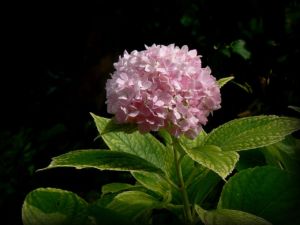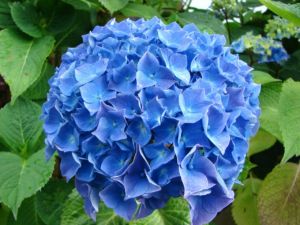How To Grow Hydrangeas
Featuring dark, broad leaves and globes of clustered flowers ranging in color from pink to blue, hydrangeas are a distinctive and eye-catching addition to any Atlanta landscape. Learning how to grow hydrangeas will improve the beauty of your plants.
How to Plant Hydrangeas
Plant hydrangeas in the spring or fall, choosing an area of your lawn that gets sun in the morning but shade in the afternoon. Dig a hole as deep as the roots of your plant, and 2 to 3 times as wide. Set your plant in the hole and fill it half full with dirt. Water, and let the water absorb. Once the water drains, fill the hole with soil. Finish by watering the new plant thoroughly.
While the basics of planting every hydrangea is about the same, each type is grouped in to four larger categories, and each has their own special growing, care, and pruning needs.
Types of Hydrangeas

Hydrangea Macrophylla: “Bigleaf” hydrangeas need partial shade, which means about 6 hours of direct sun, preferably in the morning. Afternoon shade will help your plant’s leaves from drooping.
Fertilize in March, May, and July with 8-8-8 or 10-10-10. You’ll need to make sure the soil stays moist. Using mulch will help retain moisture. These hydrangeas are color-changers. If you want blue blossoms, use acid-forming fertilizer. If you want pink blooms, use an alkaline-based fertilizer.
‘Bigleaf’ hydrangeas generally bloom in June and July in Atlanta. If you cut the blooms at the end of their cycle, that will encourage more blooms.
Prune ‘Bigleaf’ hydrangeas before August 1st, as new buds grow during late summer. If you prune during the spring, you might remove potential blossoms!
Hydrangea Arborescens: ‘Smooth’ hydrangeas are native to the Southeast, with large, white flowers. They are fond of moist soil and partial shade, and are very effective under tree landscaping. Fertilize in late winter with 10-10-10, and add mulch for moisture retention and root protection.
‘Smooth’ hydrangeas are new wood bloomers, which means that blossoms form on new growth as opposed to the prior year’s growth. As such, prune these hydrangeas during late winter before the new year’s growth begins. Remove the oldest stems and tip prune the youngest shoots for best growth. To restrict size, cut the whole plant to 12” in height.
Expect blooms in June and July. These plants can bloom a second time in August or September if the old flowers are removed after blooming.

‘Panicle’ hydrangeas are new wood bloomers, and need to be pruned in late winter. They are nicknamed ‘tree’ hydrangeas because with careful pruning, they can grow to resemble trees!
Most ‘Panicle’ hydrangeas are late bloomers, with blossoms in late summer or even in early September. The blooms generally start white and turn pink as the season progresses.
Other Varieties:
Hydrangea Quercifolia: ‘Oakleaf’ hydrangeas are Southern natives, and are fond of moist, semi-shaded areas. The foliage is very striking more so than the flowers on these shrubs. During the fall, the leaves turn deep red and bronze. During the winter, the bark peels in an eye-catching way. Fertilize with 8-8-8 or 10-10-10 in spring and summer.
‘Oakleaf’ hydrangeas are old wood bloomers, so prune around the beginning of August or when the blooms begin to fade. The new buds will form at the end of the summer, so do not prune during the winter. You can, however, trim to promote growth.
Hydrangea Petiolaris: ‘Climbing’ hydrangeas are great for Atlanta ground cover, since they can grow 60-80’. These are very ivy-like, and must be planted against masonry walls or trellises. Plant in a moist, semi-shaded area with well-drained soil. Too much shade will reduce the number of blooms, although the foliage itself won’t be affected. Fertilize in spring with 10-10-10.
‘Climbing’ hydrangeas are old wood bloomers. Prune this variety only to keep it contained.
How to Dry Hydrangeas
Hydrangeas are not only beautiful on the bush, they are gorgeous in any flower display. However, unlike other flowers, they are a little harder to dry. The trick is the timing more so than the method!
You can easily dry them by hanging them upside down, or leaving them in an inch of water and waiting for them to dry. While it’s tempting to cut the blooms at their peak, doing so will result in wilted blooms. The trick is to wait until the blooms have started drying on the plant. You’ll need to experiment with your individual shrub, but with a little patience, you can preserve these attractive flowers for the winter!

